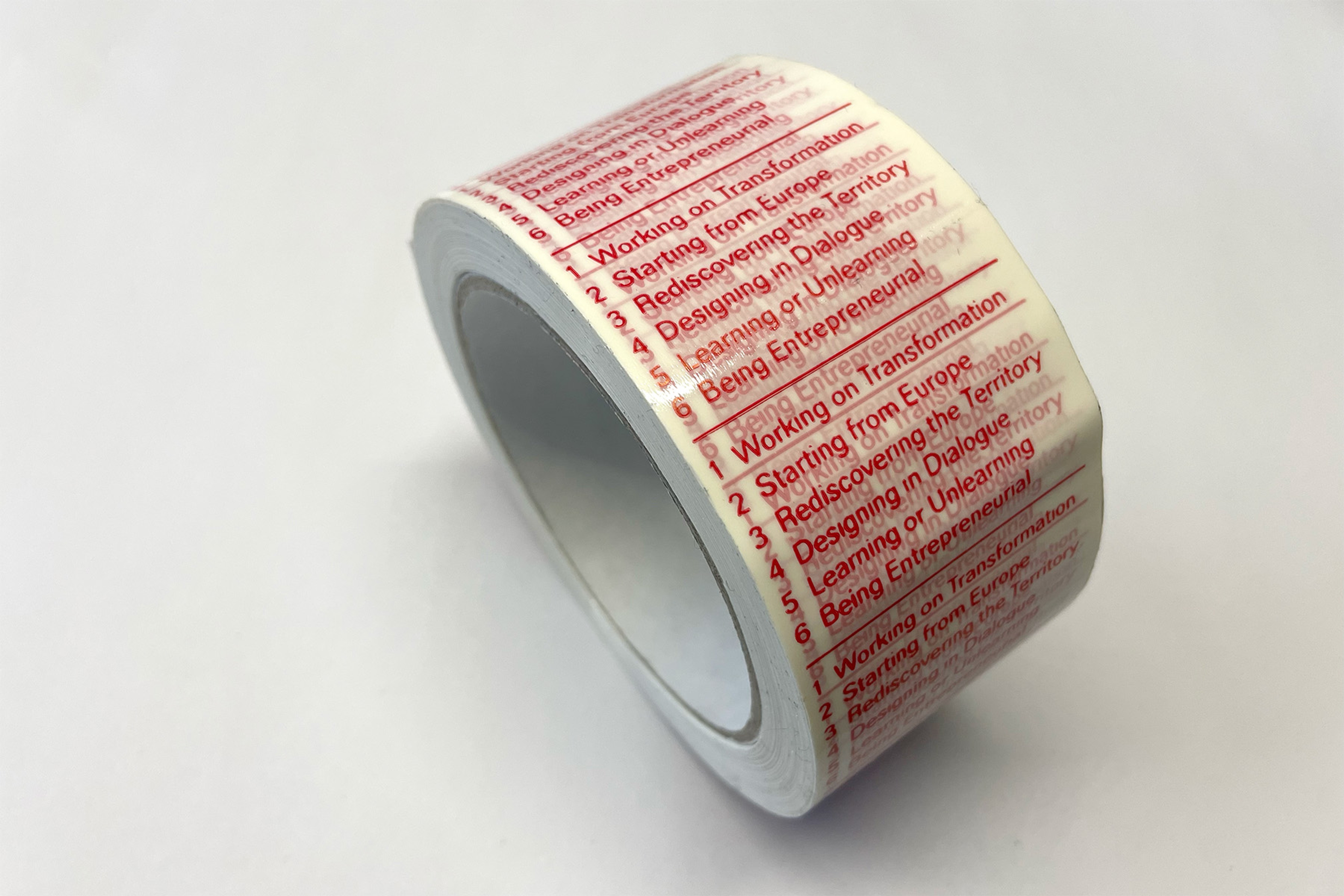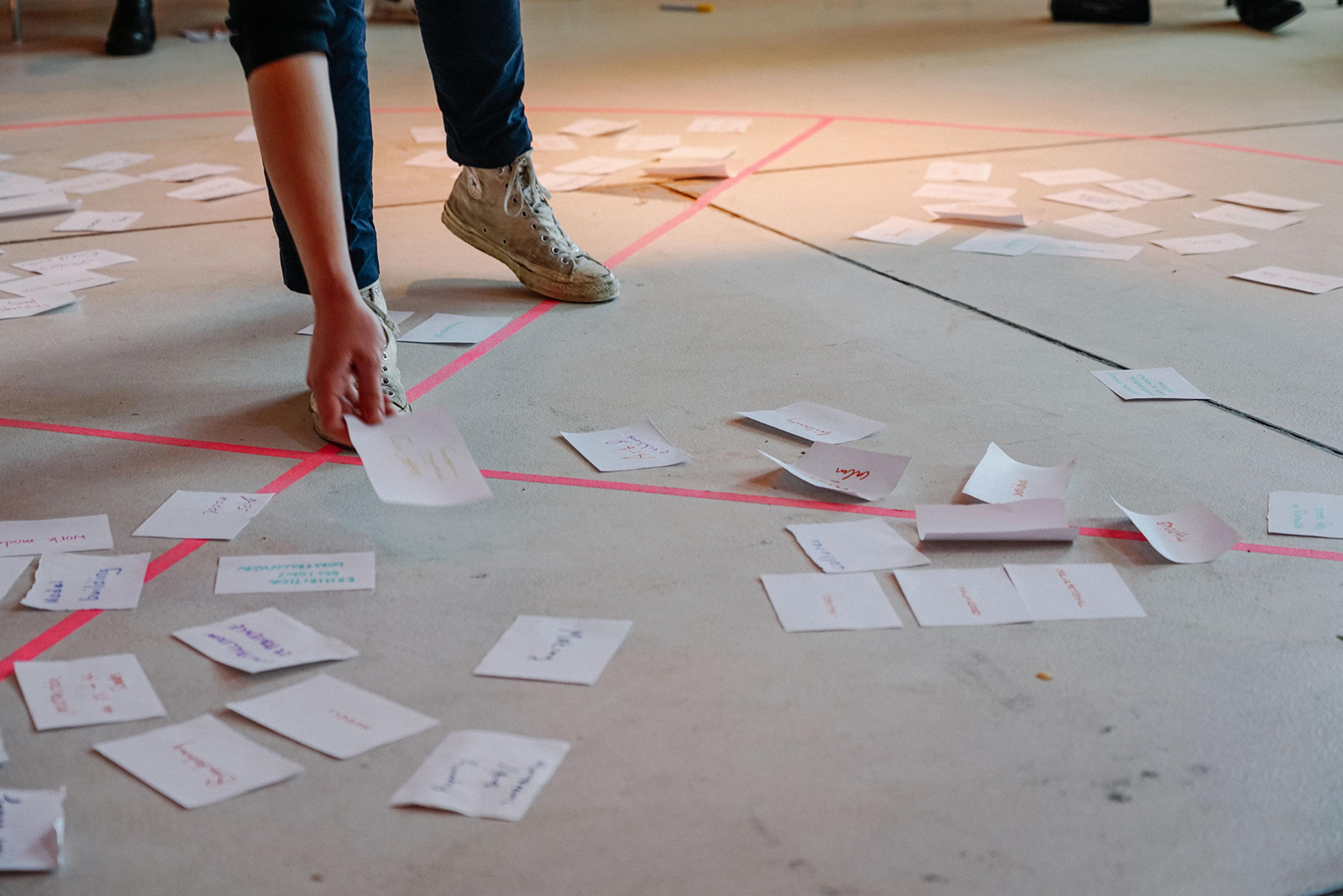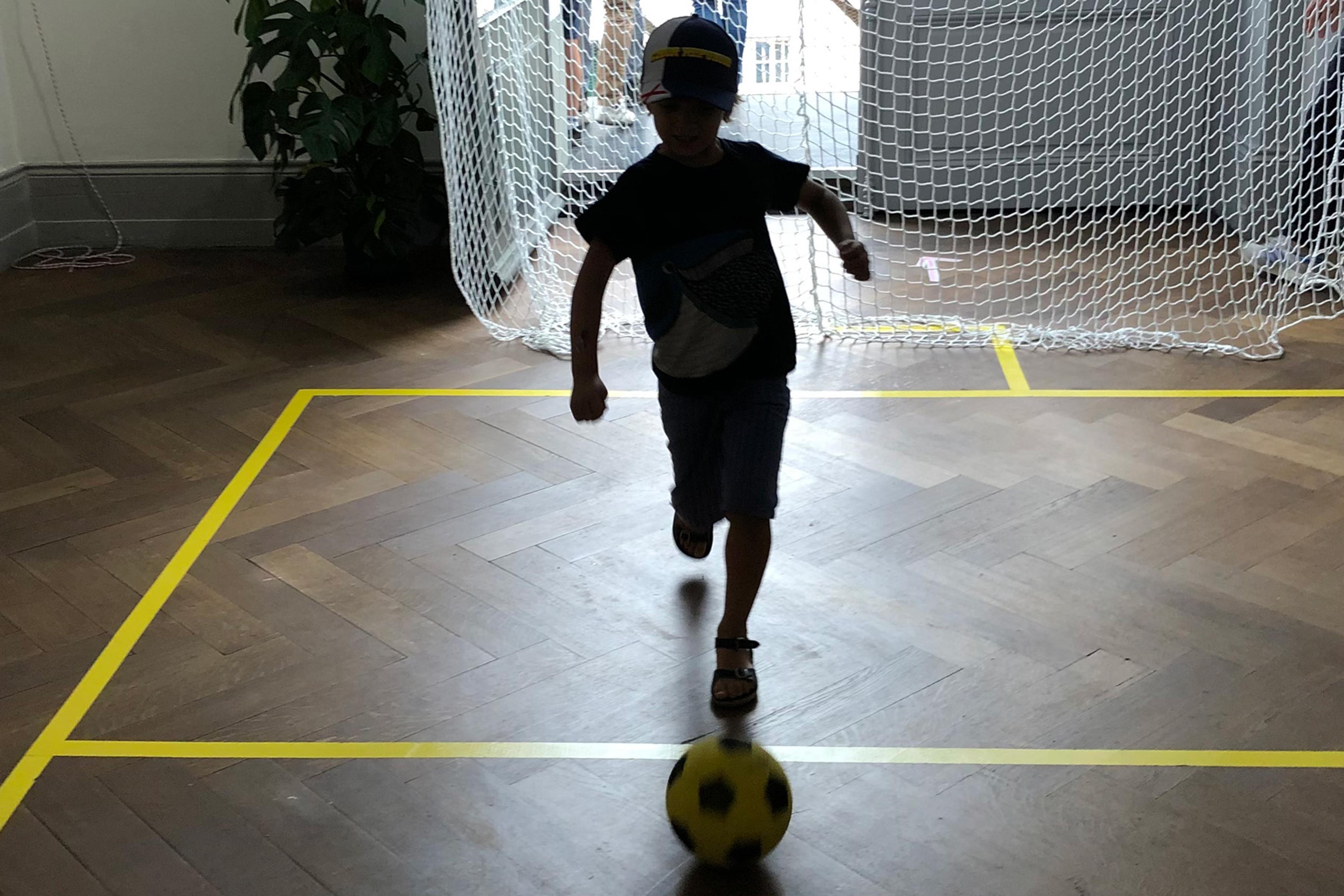Tape
Description
Tape comes in various sizes and colors, with different levels of adhesiveness – some highly sticky, others easily removable. On our NEWROPE Tape, 6 essential approaches of our chair can be found: Working on Transformation, Starting From Europe, Re-discovering the Territory, Designing in Dialogue, Learning or Unlearning, Being Entrepreneurial.
How to Use
In the Design in Dialogue Lab, floor-marking tape and other simple adhesive materials transform floors and walls into dynamic surfaces – or blank canvases – for playful exercises. With tape, we can create lines and symbols that temporarily reorganize the space. Since floor markings often evoke instinctive associations with behavioral patterns, they naturally elicit responses from users, fostering engagement and exploration. For example, we created two intersecting reference lines that allowed students to position themselves spatially. By moving along the axes between two sets of poles and standing in a specific quadrant, they could visually express both their current and preferred stance as designers based on certain variables. In this case, the axes represented the scale at which they prefer to work (ranging from small to extra-large) and their approach to urban transformation (from practical to theoretical). In other contexts, tape can also be used to suggest specific uses and associated behavioral patterns – for instance, by marking out a sports field within a space, subtly guiding interactions and movement.
Credits
[Design] OK-RM
[Material] Polypropylen
[Size] 5cm width, 66m long


